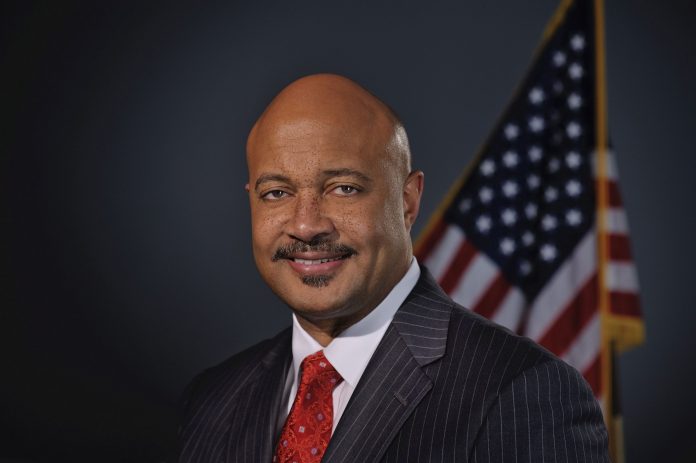WHY I OPPOSE THE CHANGE IN CHAPTER 17 OF THE TOWN ORDINANCE
by: Dan Barton, Publisher, of The New Harmony Gazette
January 14, 2018
It has been speculated by some in New Harmony that as publisher of the New Harmony Gazette, my opposition to the new amendment to Chapter 17 of the Town Ordinance is entirely personal. Nothing could be further from the truth. Certainly the new amendment does adversely effect my property at 505 Main Street, the same as it does all other property in the Business Historic District. However, even if I did not own the building, I would still be opposed to this onerous law and it’s accompanying extreme penalties. I will explain why.
I have always passionately supported and sometimes opposed other ideas proposed by Council people. In the past I have written on such issues as; how to best reopen the Harmony Way Bridge, the tactics and purposes proposed by WMI for the re-use of the New Harmony School, or whether the course taken by our Town Council regarding the use of the old fairground property was or was not in the best interest of our town. My concern is always the same; what is good for New Harmony, both economically and politically.
Over the last six months I have written ongoing critiques about the New Harmony Plan Commission’s proposal to change Chapter 17 of the Town Ordinance. An ordinance that would deny certain property rights to New Harmony’s Commercial property owners in the Business Historic District, now and in the future. As this is being written it awaits a vote by the Town Council. I am still opposed to its passage. Why is this bad law?
One of the Plan Commission’s supposed rationales has been based on a comparison of two unrelated elements of zoning regulation. They pit the principals of a business moving into a residential community versus a residence moving into the business community. We all must know that residential communities are concerned about businesses opening in their neighborhoods for very basic and long established reasons. There are concerns about possible air and water pollution, noise, increased traffic, parking, garbage, trash, and large numbers of customers traveling through the residential area to get to the businesses. The things that threaten the health, happiness and property values of those who must live and raise their families in those neighborhoods. There are, at this writing, far more businesses operating in the residential community than residents living in the Business Historic District. If any community is under threat it is not the Business Historic District but the residential district.
What are the reasons that have been sited by the supporters of this amendment for not allowing residential use in storefronts? From a historical viewpoint there have been none given. The reasons that have been offered have been vague. The prime example brought up over and over has been: because residents get the right to keep businesses in check through the use of a Variance Appeal Board. But, they say, businesses are denied that same right for keeping
residents out of the Business District. This is a form of a misplaced doctrine of egalitarianism, meant to be applied to human equality with respect to social and political civil rights, not business versus residential zones. Certainly the argument is not valid for the regulation of business versus residential property rights. A fallacious argument!
Zoning laws were never meant to equalize the two elements of business versus residential rights. In other words, the rationale of the Chapter 17 amendment supporters is, “No Rationale.†Whimsy!
Zoning laws are government regulated restrictions on how a particular piece of land can be used. The zones can be of any type, including housing, financial and industry. These laws are a partial attempt to solve a real problem. If people buy a house in a residential area, they do not want a loud or polluting factory or business to be opened next door to them. The problem is not the creation of the factory so much as it is the damage it does to the home owners. A house becomes unsalable and unusable if the sound, smell, or air quality around it is suddenly changed. This same reasoning does not apply to residents in a business district.
Zoning laws are not necessary for residences moving into the business area. The reasons suggested by supporters of the Chapter 17 amendment aren’t the same reasons as for residential zone restrictions. One imaginary issue that has been conjured up by the amendment supporters is that the business district could be taken over by residences. They believe that even one retail storefront converted to residential use could cause other businesses to suffer by losing customers. This fanciful image just hasn’t met the litmus test of time.
Historically, in 200 years it has never happened. It’s not happening presently, nor has it been proven that it will happen in the foreseeable future. A point of fact regarding that fear; during the Plan Commission sessions from June to the present, no one ever factually demonstrated that the very few examples of the residential use of storefronts, two that were brought to the public’s attention, ever caused any disruption or loss of business to any retailer in the Business Historic District. The two isolated incidents, both legal, were the only two occurrences mentioned by the Commission in the entire history of New Harmony. Are there people lining up at the gates of New Harmony waiting to get in and spend thousands of dollars to convert storefronts into residences? You have two out of twenty-five business properties in use as a residence in the Business Historic District, according to Commission Chair Flanders.
Instead of focusing on the real issues that may be causing business losses in New Harmony, the closing of the Harmony Way Bridge, which caused a loss of 300,000 vehicles a year driving into or through our community, and the issue of too many part-time second-hand retail shops. They are caught up in a delusion of false fear. They’ve caught that most dangerous of all diseases, “Chicken Little Syndrome.â€
We don’t really know what the condition of New Harmony’s businesses are. No one has been keeping or has ever developed a method of recording New Harmony’s Gross Domestic Product, the true measure of a community’s business health. Both Moody’s and The Posey County Economic Development Partnership have released the GDP numbers for 2010 to 2016 changes for Indiana, but nothing for New Harmony can be gleaned from those numbers. Interestingly, these GDP reports show Posey County with an increase in GDP of 19.5% from 2010 to 2016, 15.7% for Indiana, 16.9% for the U.S. and a dismal 9.5% for SW Indiana. So! Posey County, it
would seem, is flying. How about New Harmony? What do we really know? I asked Lynn Clark, President of the New Harmony Business Associates at the November Plan Commission meeting if anyone that she knew keeps a GDP on New Harmony, like they do on Posey County. Her answer: “I have no idea!â€
The new zoning law requiring the prohibition of first floor use of commercial property as a residence in the Business Historic District is totally unnecessary. It is a heavy-handed remedy for a problem that doesn’t exist. Zoning laws are a method of increasing power in the hands of bureaucrats. They are a direct violation of property rights. This one more than any I have ever seen or heard.
It is through the use of force, heavy fines and imprisonment, that the supporters of this change in Chapter 17, can specify how people can or cannot use their property. Having a residence in the Business Historic District does not in any way disrupt the business of its commercial neighbors. In fact, in some cases, it has been argued, it would enhance business in the district by increasing it’s resident population.
I specifically asked Plan Commission Chair Flanders in the August meeting to explain to me which business or businesses were most adversely affected by the Gosh’s allowing their granddaughter to use the first floor of their commercial building on Main Street as her residence. Flanders’ answer: “I don’t know that there was any!†So here we have proof that the complaint that the use of commercial property for residence is an invalid complaint.
This Re-Zoning is unnecessarily arbitrary. It is non-objective arbitrary power held in the hands of a few. Eventually the power gets abused. The abuse occurs through bureaucrats deciding that they can better our lives through their own attempts at amateur urban planning. They zone and re-zone and violate the Rights of citizens, disrupting the lives of anyone who doesn’t fit into their scheme.
Citizens Rights are tightly bound into the concept of Property Rights. Property Rights were on the minds of our Nation’s founders when they wrote the Declaration of Independence and declared that “We the People†had a Right to the “Pursuit of Happiness.†The Right to own and use our property as we saw fit, so long as it did not infringe on the Rights of our fellow citizens. There has not been any objective proof offered by the Plan Commission or its supporters that any person’s Rights have been violated in New Harmony by the use of first floor storefronts for residential purposes, not since the inception of our town.
I have personally fought to keep this new ordinance change measure from becoming law. I do not believe that any American Right should be given up voluntarily without questioning the basis for the change or not having indisputable proof of its necessity. Though it may seem to be just a small Right, it is small as a small cog in the much larger clockwork of our Liberty is small. This amendment is bad law and a poor choice for the Town of New Harmony. Too many of our fellow citizens have given too much in our country to protect our Rights, just for us to acquiesce to the passage of bad laws, such as this one.
This law leaves itself open to political abuse. I was reading an article by writer Alan Ehrenhalt recently concerning the abuse of zoning laws. In the article Ehrenhalt describes his meeting with a county supervisor in Tucson, Arizona. Ehrenhaldt said, “Many years ago, I spent a morning in the Pima County Courthouse in Tucson, Arizona, talking politics with Conrad Joyner,
one of the County Supervisors. Joyner was running for Congress. I asked him if he expected to have any trouble raising money for his campaign. Joyner looked at me as if I had been born yesterday. “Are you kidding?†he said. “With all the zoning cases I’ve got coming up on the County Board? “ Zoning laws are rife with abuse and should be avoided whenever possible. Use nuisance laws if necessary or establish guidelines inside the Business Association, but avoid unnecessary zoning laws.
Once again, I urge the New Harmony Town Council to reject the change in the current Chapter 17 Ordinances. Let’s not go down this path!
FOOTNOTE: This letter is posted by the City County Observer without bias, opinion or editing.



